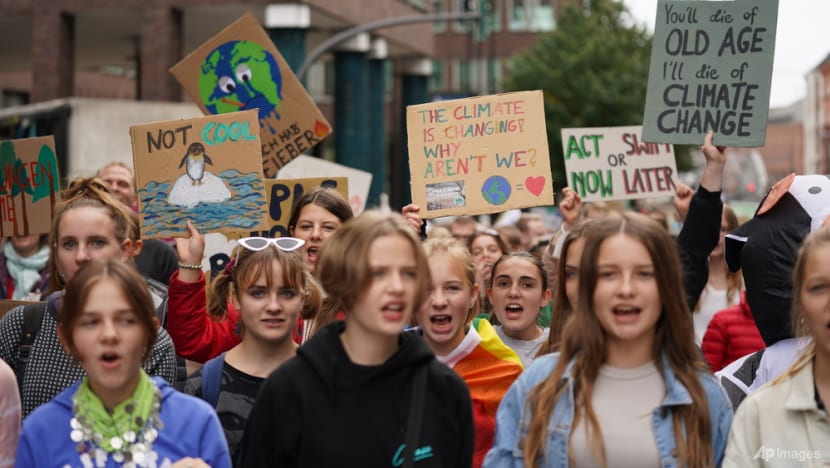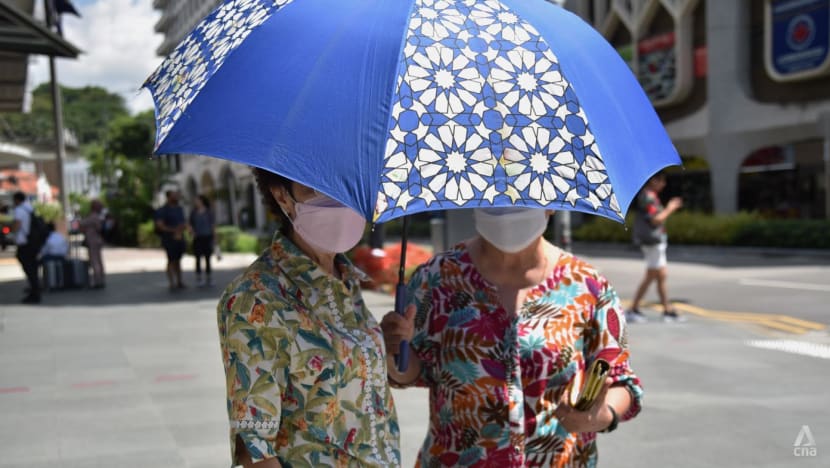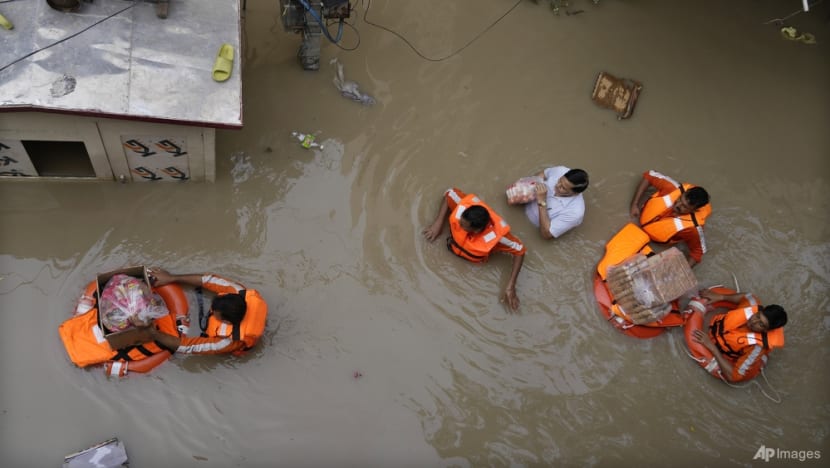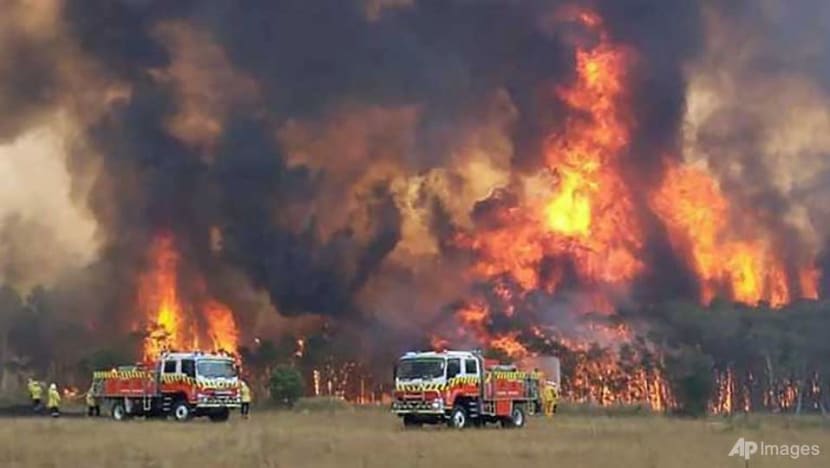Soaring temperatures to deadly floods: Is recent extreme weather the ‘new normal’?
“The whole climate system is more sensitive than we had thought to the pressure, the disruption that is being imposed by the human activities driving global heating,” said one expert.

The world could cross critical global warming thresholds sooner than previously believed, after various weather anomalies such as blistering heatwaves and torrential rains were observed around the globe last month, said climate change experts.
While scientists have long predicted more intense and extreme weather, they were not expecting it to be so quick and widespread.
“What I think has surprised people is just how quickly all of this has come upon us,” said Professor Jim Skea, who heads the United Nations’ climate expert group.
“So we were absolutely expecting this kind of direction, whether it was floods, torrential rain or the heat extremes we've seen, but it just happened much more quickly.”
‘ERA OF GLOBAL BOILING HAS ARRIVED’
Last week, United Nations Secretary-General Antonio Guterres said that the era of global warming has ended and “the era of global boiling has arrived”.
Experts have described July 2023 as the hottest month ever. Out of the 30 hottest days ever recorded, 21 occurred last month.
The mean global temperature was at least 0.2 degrees Celsius warmer than July 2019, the previous hottest month on record.
Prof Skea, chair of the Intergovernmental Panel on Climate Change (IPCC) and professor of sustainable energy at Imperial College London, said this “could be a kind of new normal”.
“The climate does vary from one year to another, and it does vary along the El Nino and La Nina cycle that we see in the climate,” he told CNA’s World Tonight on Wednesday (Aug 2).
“So it may be that we're a bit above a long-term average, but the long-term average is surely rising and will continue to rise, unless we see very significant reductions in greenhouse gas emissions.”

The global average temperature is likely to breach the 1.5 degrees Celsius threshold by the early 2030s.
“And it will continue to rise beyond that, even to two or even perhaps three degrees warmer than pre-industrial, unless we get a grip on emissions,” said Prof Skea, whose research interests are in energy, climate change and technological innovation.
Asia, for instance, is warming faster than the global average and has seen scorching temperatures and deadly floods in the past month.
Professor Janette Lindesay, climatologist at the Australian National University’s Fenner School of Environment and Society, said experts expected such extreme weather patterns would only become more frequent a few decades from now.
“But we are starting to see them happen already,” she told CNA’s Asia Tonight on Tuesday.
“The whole climate system is more sensitive than we had thought to the pressure, the disruption that is being imposed by the human activities driving global heating.”
ASIA IS WORLD’S MOST DISASTER-PRONE REGION
Asia has been labelled by the World Meteorological Organization as the world's most disaster-prone region.
Many Asian countries have been hit by intense heatwaves sweeping the northern hemisphere in recent weeks. Heatstroke alerts went full blast in Japan and China, where mercury levels soared past the 50 degrees Celsius mark.
Record monsoon rainfall also inundated large swathes of Asia, due to higher precipitation caused by the prolonged extreme heat.
In India, for instance, torrential rains have killed dozens of people, as well as caused landslides and flash floods. Meanwhile, powerful Typhoon Doksuri has also swept through countries such as China and the Philippines, leaving a trail of destruction in its wake.
Across the globe, some 180 million Americans – about half the population of the United States – are under heat watches and warnings due to the sweltering heat.
Further up north, parts of Canada are quite literally on fire. Firefighters are battling more than 1,000 blazes across the country, over 600 of which are considered "out of control".
Ferocious wildfires are also ravaging southern Europe and north Africa.

“What really struck me is how widespread these anomalies have been in June and July,” said Prof Lindesay.
“To find that we have got these incredibly high temperatures exceeding expectations everywhere and breaking records everywhere across the northern hemisphere on every continent, that is extremely unusual. I have not seen this before to the extent and to the degree that it has happened on this occasion.”
NOT TOO LATE TO PREVENT CLIMATE CRISIS
Scientists are making it clear that human-induced climate change is to blame.
“These are all the extreme events that we expect to happen in a heating world, with global heating that has proceeded unchecked really for decades now,” said Prof Lindesay, adding that climatologists have been warning about such occurrences for a long time.
“We have spent many years sounding the warnings and finding that the actions taken by decision makers have not lived up to what has been necessary to ameliorate the emissions of greenhouse gases, which are behind all of this heating and the extreme events that are resulting much sooner than we had hoped.”
However, some experts believe it may not be too late to avoid the climate crisis or limit some of its worst effects.
“Let's not kid ourselves. This is really serious, but human beings have it within their power to change the direction of this by putting in place ambitious policies to reduce emissions,” said Prof Skea, adding that governments do not lack information on climate action.
“Indeed, many governments around the world have now adopted these net zero targets for some point in the middle or the second half of the 21st century. I think the gap that you see is that the targets need to be backed up by very active and specific policies that will allow emissions to fall.”

Going forward, there needs to be processes and debates on how exactly emission reductions can take place, said experts, suggesting tweaks in working practices and the way cities are designed.
“Obviously, one issue that we are seeing is that it is becoming really quite problematic remaining outside when you get a problem of heat and humidity,” said Prof Skea.
“So as well as reducing emissions, there's absolutely a big agenda for adapting to climate change... We need to get used to higher temperatures, to a warmer world, but there's also a lot we can do to prevent the world getting very much warmer.”



















